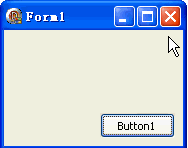多线程编程(14) - 多线程同步之 WaitableTimer (等待定时器对象)
function CreateWaitableTimer( lpTimerAttributes: PSecurityAttributes; {安全} bManualReset: BOOL; {True: 可调度多个线程; False: 只调度一个线程} lpTimerName: PWideChar {名称} ): THandle; stdcall; {返回句柄} function SetWaitableTimer( hTimer: THandle; {句柄} var lpDueTime: TLargeInteger; {起始时间} lPeriod: Longint; {间隔时间} pfnCompletionRoutine: TFNTimerAPCRoutine;{回调函数的指针} lpArgToCompletionRoutine: Pointer; {给回调函数的参数} fResume: BOOL {是否唤醒系统} ): BOOL; stdcall; {}
WaitableTimer 对象较复杂, 其基本的理念是让等候的线程在指定的时间运行.
像其他同类对象一样, 先要建立(CreateWaitableTimer), 建立函数的第二个参数决定是调度一个线程还是所有等候的线程; 这一点和信号对象(Semaphore) 有些类似, 不过 Semaphore 可以指定可驱动线程的具体数目.
和其他同类对象不同的是: 在 CreateWaitableTimer 以后, WaitableTimer 对象并没有马上开始工作;
再调用 SetWaitableTimer 函数后才能让它发挥作用. 这又有点像 Event 对象.
SetWaitableTimer 函数比较麻烦, 得慢慢来, 譬如这样使用:
var hWaitableTimer: THandle; {WaitableTimer 对象的句柄变量应该是全局的} procedure TForm1.Button1Click(Sender: TObject); var DueTime: Int64; begin {建立 WaitableTimer 对象并返回句柄} hWaitableTimer := CreateWaitableTimer(nil, True, nil); {中间的 True 表示可驱动多个线程} DueTime := 0; {这将是 SetWaitableTimer 的第二个参数; 因为是 var 参数, 不能直接给常量} SetWaitableTimer(hWaitableTimer, {WaitableTimer 对象的句柄} DueTime, {起始时间, 这里给的是 0} 0, {间隔时间, 这里给的也是 0} nil, {暂不用回调函数} nil, {当然也不需要给回调函数参数了} False {此值若是 True, 即使系统在屏保或待机状态, 时间一到线程和系统将都被唤醒!} ); end; {再说明: 起始时间(第二个参数)有三种赋值方法: 1、> 0 时是绝对时间, 是一个 TFileTime 格式的时间(具体赋值方法后面详解); 2、< 0 时是相对时间, 相对是相对于当前, 譬如 -50000000 表示 5 秒钟后执行(单位是0.1毫秒, 后面详述); 3、= 0 时, 立即执行, 不再等待; 上面的举例和下面第一个例子我们先用 0. 间隔时间(第三个参数)有两种情况: 1、譬如 5000 表示每隔 5 秒钟执行一次, 其单位是毫秒; 本页第二个例子使用了 500(半秒); 2、如果赋值为 0, 表示根据起始时间只执行一次, 不再重复执行. 回调函数及其参数(第四、五个参数), 这会牵扯出一个更复杂的话题(APC), 暂时不用它, 后面再说. 最后一个参数上面已经说清楚了, 我也测试了一下(分别在屏保和待机状态下), 很有效! }
第一个例子我们将尽量简单的使用它(但这样体现不出它的优势):
CreateWaitableTimer 时我们就决定让它可控制多个线程;
SetWaitableTimer 时先让它立即参与控制, 只执行一次, 也不使用回调函数.
代码文件:
unit Unit1; interface uses Windows, Messages, SysUtils, Variants, Classes, Graphics, Controls, Forms, Dialogs, StdCtrls; type TForm1 = class(TForm) Button1: TButton; procedure Button1Click(Sender: TObject); procedure FormDestroy(Sender: TObject); end; var Form1: TForm1; implementation {$R *.dfm} var f: Integer; hWaitableTimer: THandle; {等待定时器对象的句柄} function MyThreadFun(p: Pointer): DWORD; stdcall; var i,y: Integer; begin Inc(f); y := 20 * f; if WaitForSingleObject(hWaitableTimer, INFINITE) = WAIT_OBJECT_0 then begin for i := 0 to 1000 do begin Form1.Canvas.Lock; Form1.Canvas.TextOut(20, y, IntToStr(i)); Form1.Canvas.Unlock; Sleep(1); end; end; Result := 0; end; procedure TForm1.Button1Click(Sender: TObject); var ThreadID: DWORD; DueTime: Int64; begin hWaitableTimer := CreateWaitableTimer(nil, True, nil); DueTime := 0; SetWaitableTimer(hWaitableTimer, DueTime, 0, nil, nil, False); Repaint; f := 0; CreateThread(nil, 0, @MyThreadFun, nil, 0, ThreadID); CreateThread(nil, 0, @MyThreadFun, nil, 0, ThreadID); CreateThread(nil, 0, @MyThreadFun, nil, 0, ThreadID); end; procedure TForm1.FormDestroy(Sender: TObject); begin CloseHandle(hWaitableTimer); end; end.
窗体文件:
object Form1: TForm1 Left = 0 Top = 0 Caption = 'Form1' ClientHeight = 116 ClientWidth = 179 Color = clBtnFace Font.Charset = DEFAULT_CHARSET Font.Color = clWindowText Font.Height = -11 Font.Name = 'Tahoma' Font.Style = [] OldCreateOrder = False OnDestroy = FormDestroy PixelsPerInch = 96 TextHeight = 13 object Button1: TButton Left = 96 Top = 83 Width = 75 Height = 25 Caption = 'Button1' TabOrder = 0 OnClick = Button1Click end end
下面是一个每隔半秒钟(500ms)执行一次的例子(窗体文件同上):
代码文件:
unit Unit1; interface uses Windows, Messages, SysUtils, Variants, Classes, Graphics, Controls, Forms, Dialogs, StdCtrls; type TForm1 = class(TForm) Button1: TButton; procedure Button1Click(Sender: TObject); procedure FormDestroy(Sender: TObject); end; var Form1: TForm1; implementation {$R *.dfm} var f: Integer; hWaitableTimer: THandle; function MyThreadFun(p: Pointer): DWORD; stdcall; var i,y: Integer; begin Inc(f); y := 20 * f; {这里和上面不同, 把等待弄到循环里面了} for i := 0 to 1000 do begin if WaitForSingleObject(hWaitableTimer, INFINITE) = WAIT_OBJECT_0 then begin Form1.Canvas.Lock; Form1.Canvas.TextOut(20, y, IntToStr(i)); Form1.Canvas.Unlock; // Sleep(1); end; end; Result := 0; end; procedure TForm1.Button1Click(Sender: TObject); var ThreadID: DWORD; DueTime: Int64; begin hWaitableTimer := CreateWaitableTimer(nil, False, nil); {这里的参数也和上面不一样} DueTime := 0; SetWaitableTimer(hWaitableTimer, DueTime, 500, nil, nil, False); {500 ms} Repaint; f := 0; CreateThread(nil, 0, @MyThreadFun, nil, 0, ThreadID); CreateThread(nil, 0, @MyThreadFun, nil, 0, ThreadID); CreateThread(nil, 0, @MyThreadFun, nil, 0, ThreadID); end; procedure TForm1.FormDestroy(Sender: TObject); begin CloseHandle(hWaitableTimer); end; end.
转帖:http://www.cnblogs.com/del/archive/2009/02/16/1392049.html

